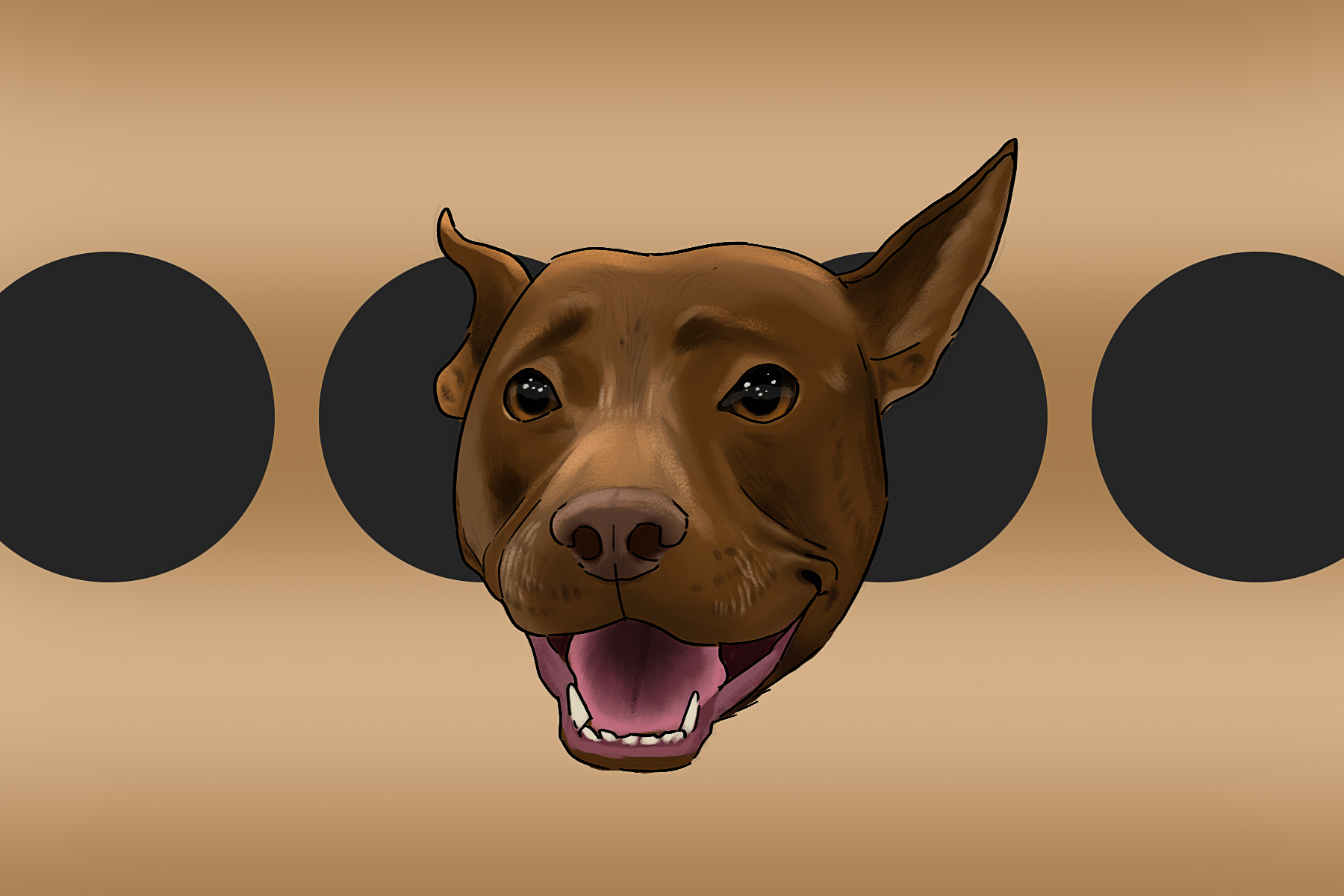In one of her most recent videos, Stella, a brown Catahoula and blue heeler mix, walks into the room with her custom soundboard filled with around 40 buttons. Each button, when pushed, voices a simple word. She raises her paw and presses “all done” before walking to another side of the board, clearly looking for a certain button, and presses “outside.” Almost without thought, she says, “come come eat.” Her owner then starts preparing Stella’s breakfast. Stella is the first of the “talking dogs” that communicates through buttons and has become social media famous for her videos, garnering over 700,000 followers on her Instagram page.
Stella’s owner, Christina Hunger, is a speech-language pathologist. When she and her fiancé, Jake, got Stella as a puppy, she began to question if dogs would be capable of using augmentative and alternative communication (AAC). Hunger began to teach Stella how to communicate using her knowledge with language facilitation strategies with children.
An AAC is a communication method that allows people with impairments revolving around written and spoken word to communicate using pictures, speech-generating devices or words. Hunger and her fiancé created a soundboard filled with buttons for their young puppy. To make the AAC device, they placed voice-recorded buttons in rows and columns on a board, making sure there was enough space for Stella to walk through them to reach each button.
On a post on her blog, Hunger for Words, Hunger explained that “every single person has two types of language abilities: receptive language and expressive language.” Receptive language is the comprehension of language, and expressive language is the various forms of communication, such as verbal speech, gestures, facial expressions, writing and sign language. Because everybody has these two abilities, Hunger questioned, “Why shouldn’t the same be true for dogs?”
Hunger told Today that she “became interested in teaching Stella to talk after she noticed that Stella’s eye contact, vocalizations and gestures were similar to the ones kids use before they can communicate verbally.”
Hunger and her fiancé began with one simple button for “outside.” They taught her the meaning of the word by pressing the button and then opening the door. Hunger noted that this “aided language input is one of the most important strategies for teaching language with AAC.”
After Stella showed comprehension for the button, the couple tried to add more words, all on a board, including “eat,” “bye” and “walk.” The speech-language pathologist wrote that the best tip for helping a dog learn words is to let them hear words being used: “Use short, simple phrases and repetitive language to talk about exactly what’s happening in the moment or what is about to happen,” such as “time to eat” or “want to go outside?”
Stella, after a couple of years, now has a 40-button soundboard. The board, which is usually situated in a central location in the house, is taken with her whenever she travels for a long amount of time.
Hunger has also inspired other owners to teach their dogs how to talk. Another talking dog is Bunny — a poodle and an Old English sheepdog mix. She has over 400,000 followers on Instagram and has become viral on TikTok.
Instead of using the rectangular soundboard that Hunger uses, Bunny’s owner, Alexis Devine, arranged the buttons in a semicircle and separated them by categories of nouns, subjects and verbs. This is known as the Fitzgerald Key, mostly used to help people who are deaf visualize the construction of language.
Jane C. Hu from Slate questioned Stella’s true comprehension of language. She wrote, “We necessarily project a bit of ourselves into interpreting what another being wants, especially when we don’t speak the same language.” Hu argued that with any combination of words a dog communicates, the owner is likely to interpret something out of it, no matter how far-fetched the ideas may seem. She furthered her argument by stating, “There’s an important distinction between Stella’s button pushing and actually understanding language in the way that humans do.”
Bunny’s owner even told Today, “I don’t know if this is real. I’d say I’m a hopeful skeptic. I think it would be irresponsible not to be skeptical. Especially now that so many people are following our journey, I just want to be really transparent about that as much as I can.”
In an article from Medium, a writer suggested that visual and auditory cues given by the pet owner, or perhaps a human’s tendency to “attribute meanings to the meaningless,” are good reasons for skepticism.
In some of Hunger’s videos, the true meaning of Stella’s words is incomprehensible until the viewer reads Hunger’s explanation of the situation’s context. In other videos of talking dogs, sometimes the button the dog presses is confusing, perhaps due to a misstep or misunderstanding of the word associated with the button. Whether or not this is because of Hu’s suggestion that the interpretation was skewed by the owners’ hopes, or because of the specific context and language of Stella’s daily routine, the truth will forever be unknown to viewers.
A viral trend about Bunny experiencing an existential crisis has circulated recently on social media. TikTokers joked that Bunny will learn language proficiently enough that she’ll become sentient of being owned or being a dog. Other videos made fun of the impossibility of Bunny questioning her existence in the world.
@christina.calcote A chapter in @what_about_bunny ‘s existential crisis that no one is talking about. #bunnythedog #smartdog #trainingdog #crisis 
This social media trend has caught the attention of many — especially dog owners. The videos of talking dogs like Stella and Bunny make viewers smile and feel in awe of a dog being able to communicate by forming phrases with buttons.
“I think how important dogs are to their humans,” Hunger told People. “I just imagine how much deeper the bond will be.”
Talking dogs may not be as far off in the future as many may think. Dog owners have long wondered what their best friend could be thinking — interpreting their body language, barks and gestures to discover what they need or want at any given moment. However, having dogs directly tell their owners what they are thinking in ways humans can understand could mean more open communication between dogs and their owners.
Hunger seeks to help others who also always wondered what their dogs are thinking. On her blog, she documents the progress of Stella’s language skills, and she provides tips for dog owners on how to teach their dogs to communicate with a soundboard.
In a blog post giving tips to owners who want to train their dogs to “talk,” Hunger wrote, “Order some buttons for your pup, watch and read along for inspiration, and see what your dog has been wanting to tell you. Let’s create a world of talking dogs.”

















